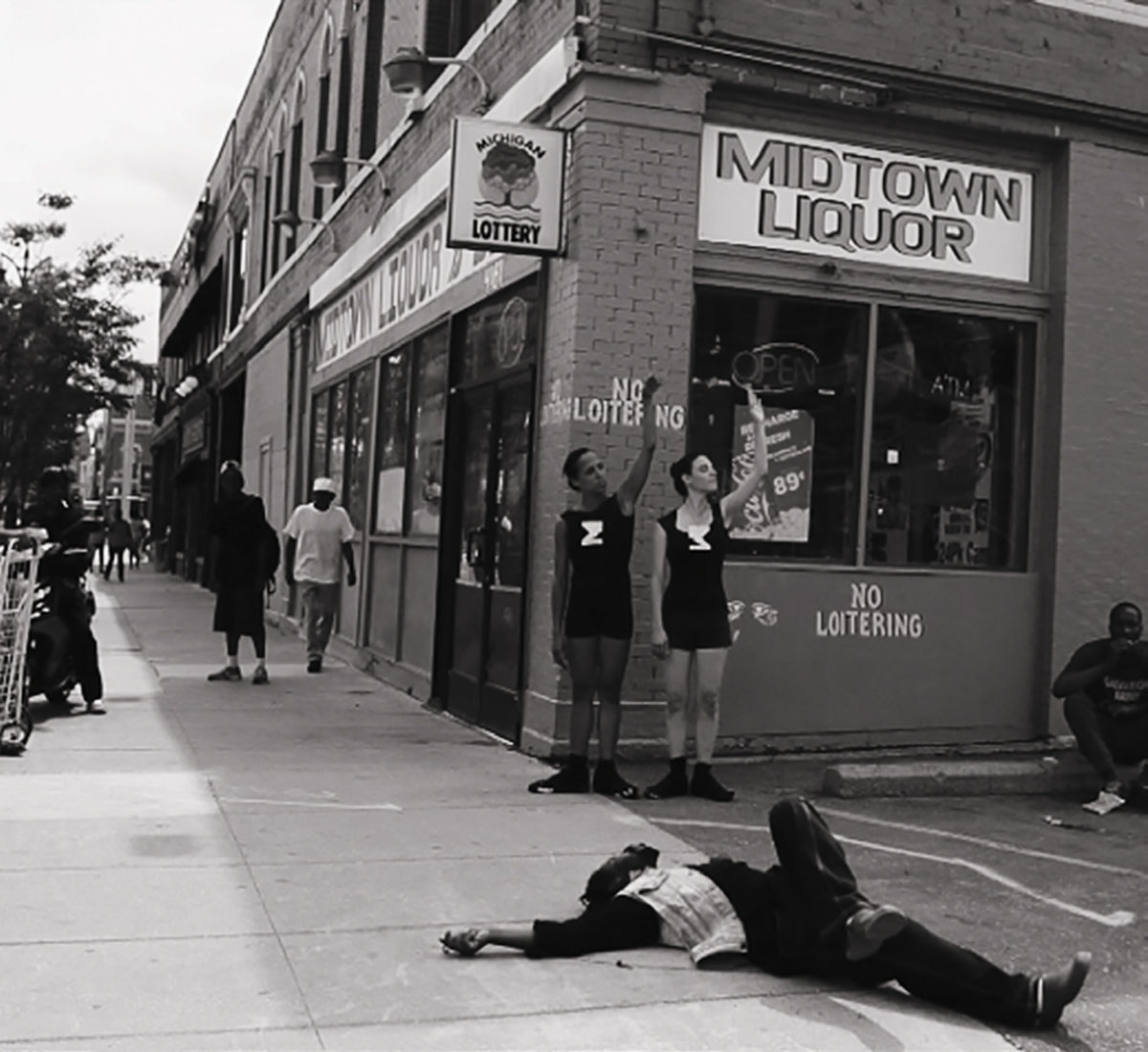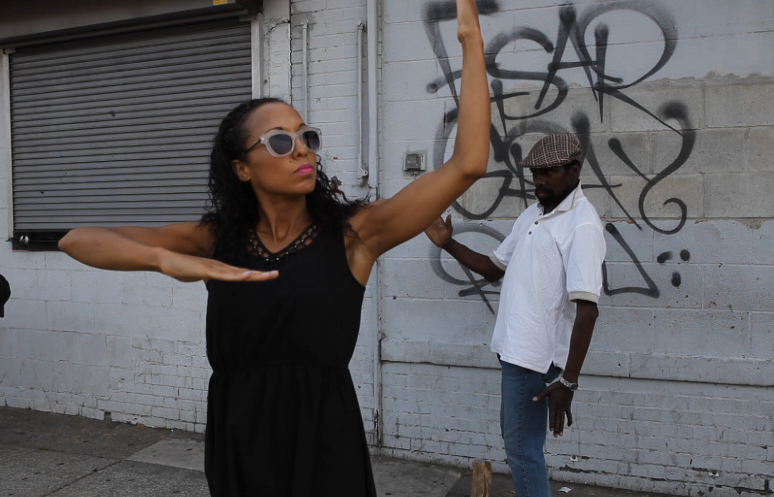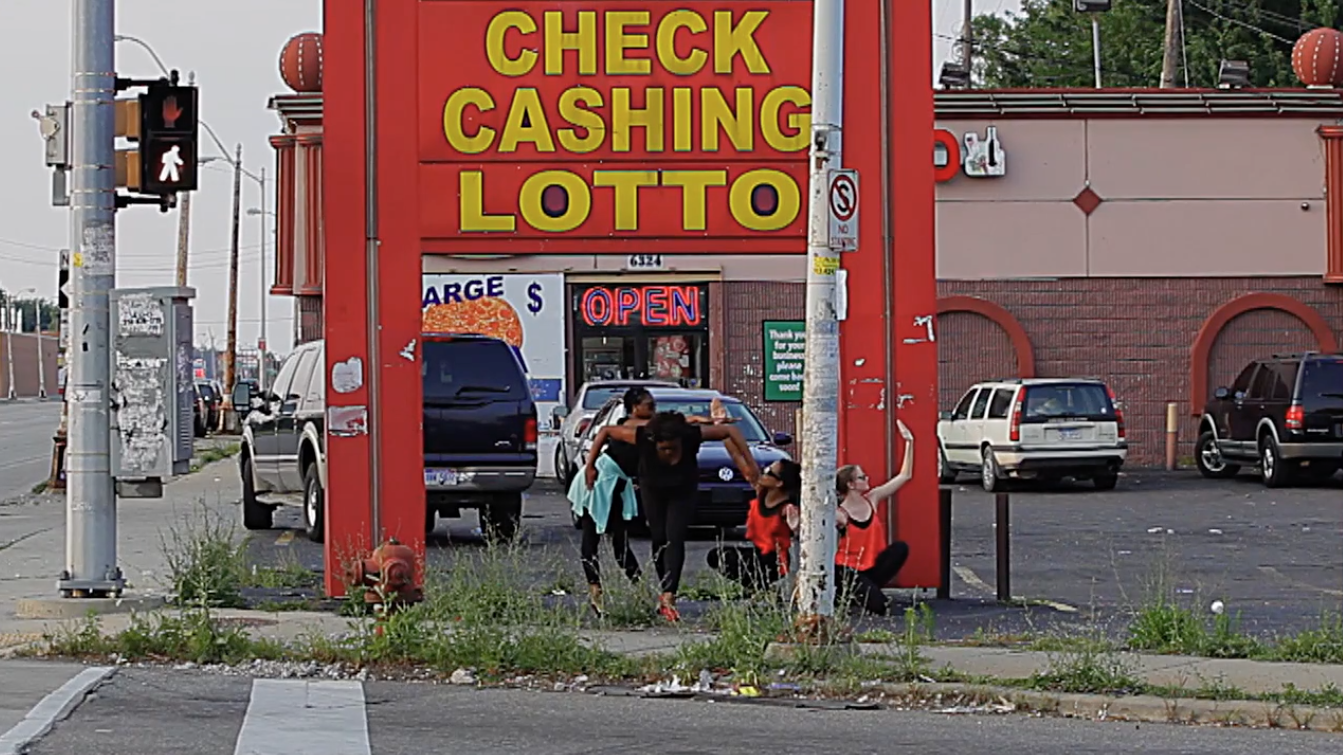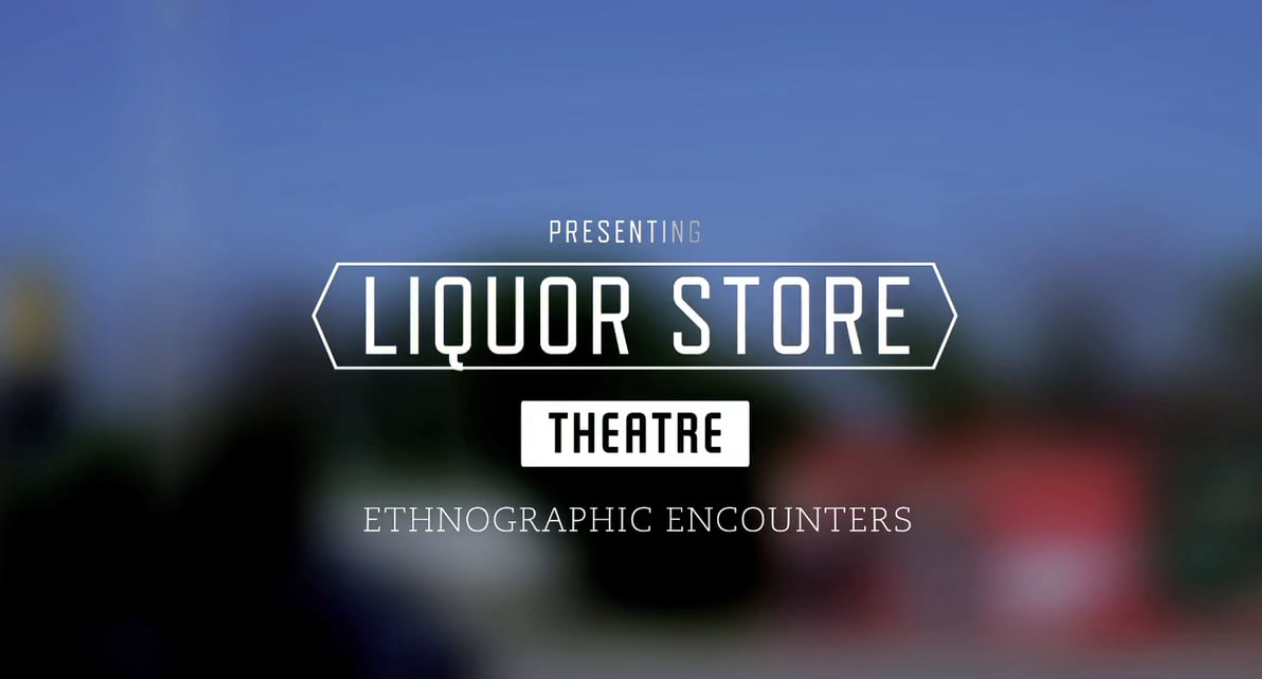Liquor Store Theater:
Dancing with Gentrification in post-Bankruptcy Detroit
Maya Stovall
Liquor Store Theatre (LST) offers a window into Detroit’s post-bankruptcy gentrification process. In McDougall-Hunt, where the project began, there is a liquor store on just about every corner; on some blocks, there is one on each corner and also one or more in the middle of the block. This is a neighborhood with upwards of a sixty percent vacancy rate in which viable businesses are sparse, public gathering spaces such as parks and plazas are virtually nonexistent save for community gardens run by residents, and even the most minimal city infrastructure such as bus stop benches and street lights are so rare as to be sumptuous objects.
The liquor stores in McDougall-Hunt are not sumptuous, for their habitualness within the landscape. Generally, with some exceptions, these stores are run by immigrant families who work long hours in the city, commuting from various suburbs and working a twelve hour plus shift from mid-morning to late night. The majority of the McDougall-Hunt liquor stores are in decrepit condition. The facades are pronounced with provisional signage, once brightly colored and now sun-faded hand painted block letters offering promises of "ice cold beer," "hot sandwiches," "chicken gizzards," and "lotto." Grit-stained sidewalks are littered with windblown trash, splinters of broken glass and concrete crumbles of potholes bursting between the seasons dot the driveways and walkways. It’s fascinating that these unkempt stores peddling limited goods are so incredibly plentiful in a twenty-first century American city. What attracted me to these stores, as much as the repetitive, hypnagogic landscape offered by the stores themselves on block after block, is the coming and the going – the movement of people through the small sidewalk, street, and parking lot spaces surrounding the stores. There are conversations, business transactions, exchanges of information, expressions of leisure and festivity, an ongoing negotiation of time, space and place. This is what I consider a theater – a site of contestation, action, and reaction – that is already present in front of the store, and I imagine has been, long before McDougall-Hunt and its liquor stores became a site of the choreo-ethnographic project that is LST.
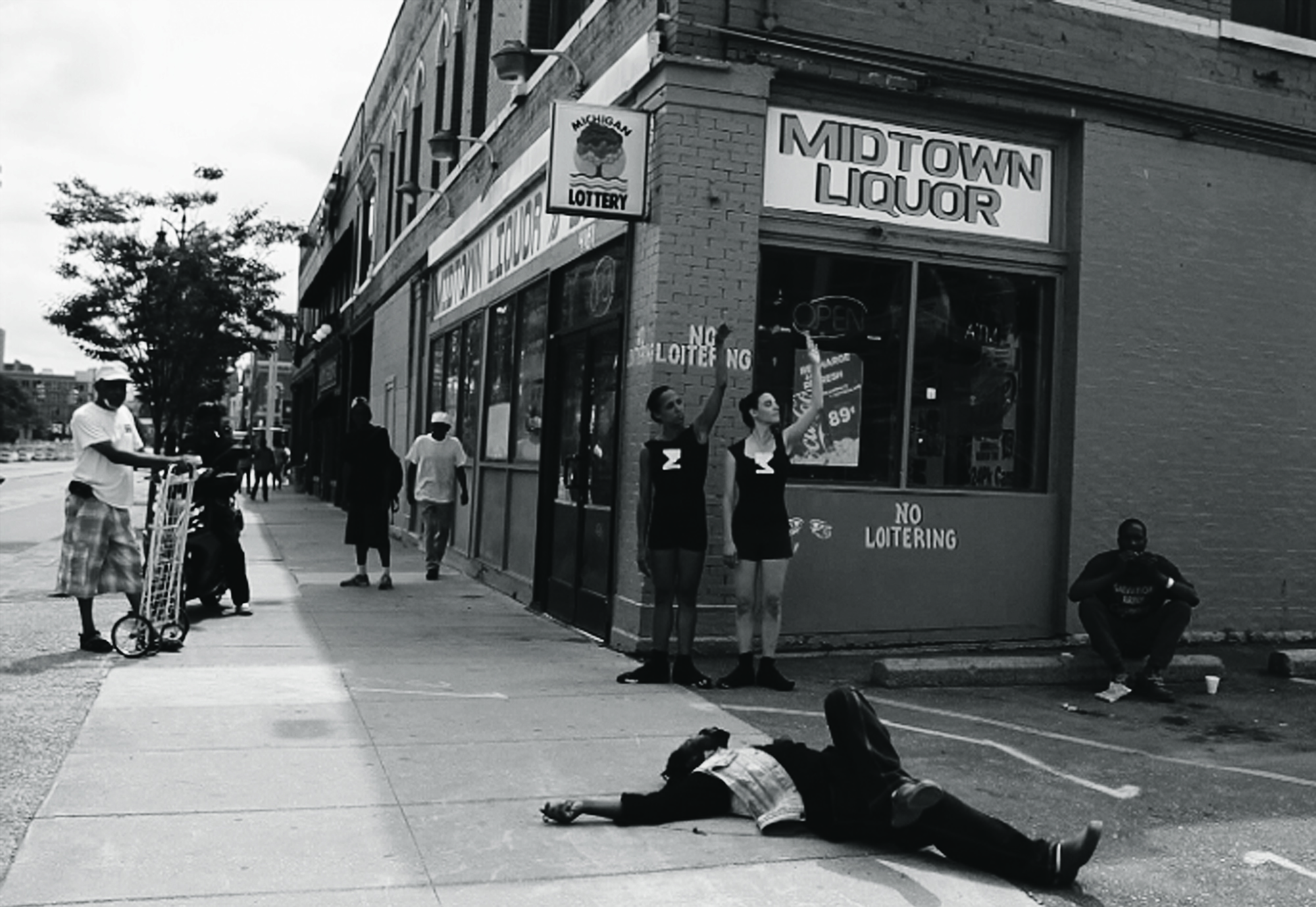
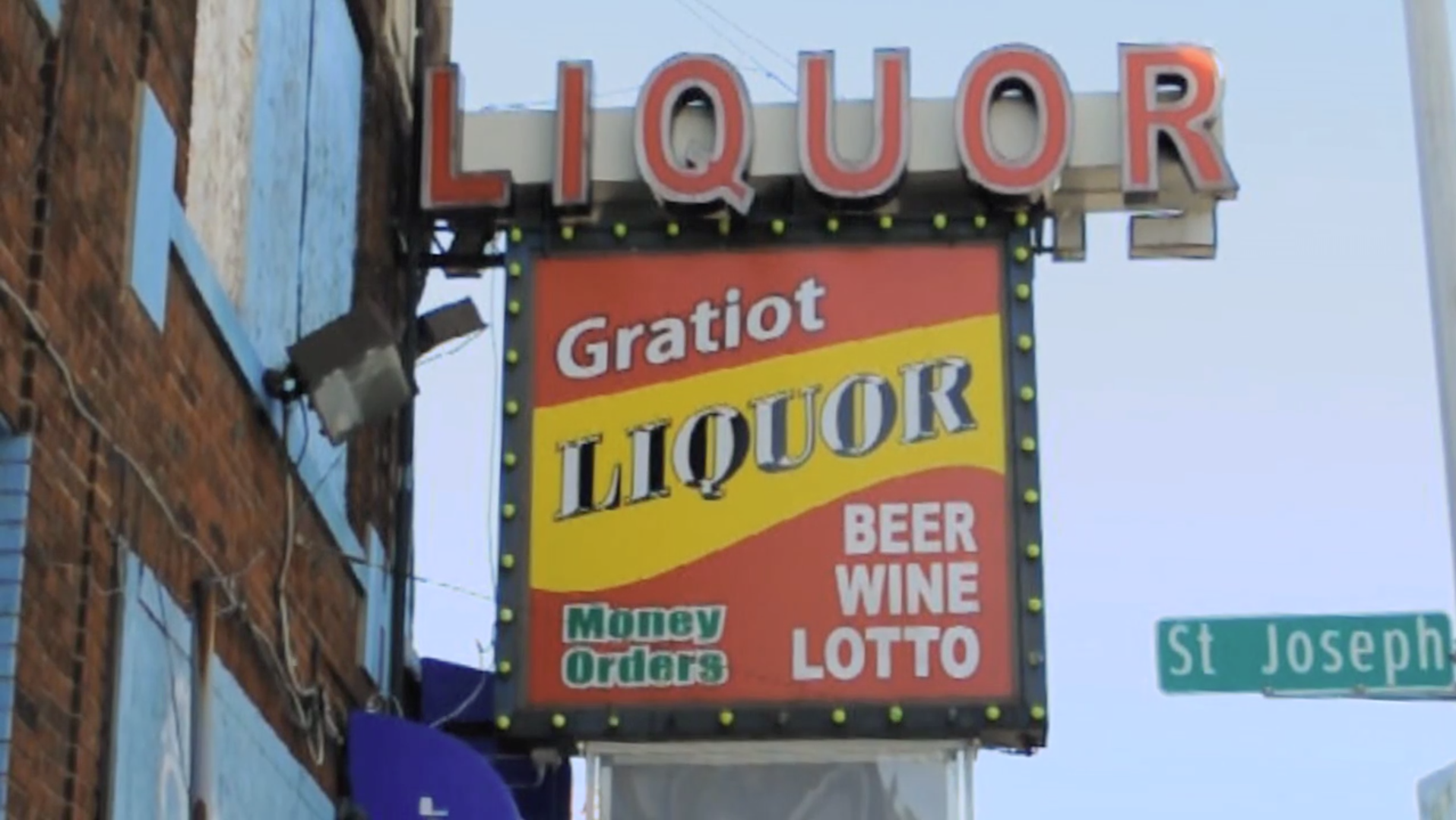
Upon repeated observation of McDougall-Hunt liquor stores in the summer, right away one notices the presence of public characters, à la Jane Jacobs,1Urban planner and urban space theorist Jane Jacobs introduced the concept of public characters in 1961, in her text, The Death and Life of Great … on the sidewalks surrounding the stores. Although there is a steady flow of customers from within the neighborhood and including those passing through the neighborhood, some of the same men and women daily dot the parking lot and sidewalks of the neighborhood. To understand the importance of the happenings in these small urban spaces, it is helpful to view the overall context. In McDougall-Hunt, opportunity is thin and seldom; joblessness outnumbers those who are employed; poverty is the norm. McDougall-Hunt’s median income is approximately $13,000, its unemployment rate is officially upwards of twenty-one percent, obviously much higher in reality when observing the neighborhood, over sixty-five percent of residents are living below the federal poverty line, and the urban renewal which has landed in Downtown Detroit just two miles west has professedly ignored McDougall-Hunt and its sweeping vacancy. In a neighborhood strapped for resources, viable urban spaces become a gathering place for those who are impacted by the neo-liberal policies of Detroit which leave swaths of the city like this one unstirred by private and public investment. In a neighborhood where infrastructure, jobs, and decent housing are largely absent, what is left to study? People are left. Time, space, and place are left. The study of performance of people who are traditionally marginalized by classification – whether socio-economic, ethnoracial, gender, or some combination of these identification tensions – allows a study of contention. The study of the time-space, and place surrounding the liquor store allows a view into a private/public dichotomy and a view into the remnants and the beginnings in cycles of capitalism and flexible accumulation. In some of the seemingly most anonymous places of Detroit neighborhoods – the sidewalks surrounding its party stores – a story of gentrification in post-bankruptcy Detroit is found.
Our staged dance performances on the grit-encrusted sidewalks of Detroit invite residents to speak about life in the city. The documentary films show a facet of city life that is both poetic and starkly honest. I have feelings of skepticism and ambivalence toward helicopter researchers and artists landing in neighborhoods to extract information and ideas from residents and subsequently write articles, monographs, and books, or produce works, based upon weeks or even days of one-sided, outsider-centered research. Spending a few days somewhere would allow a researcher or artist to become an “expert” on the neighborhood or the phenomenon at hand. As a fourth-generation Detroiter I have been skeptical of newcomers seeking to extract Detroit-ness without infusing their own skin in the game (that is, “skin” other than just money) – without being vulnerable, accessible, and engaged with the working-class people who have inhabited this city before it became a city du jour. Although I’m from this place, I don’t want to simply take from Detroit – I want to dance with it in a way that challenges assumptions. The dancing in LST challenges the gaze – it challenges the idea of a helicopter researcher/artist. By engaging on the street in performance – the very act which the project seeks to study – Liquor Store Theater challenges recapitulated categories of "participant," "researcher," "audience," and "performance."
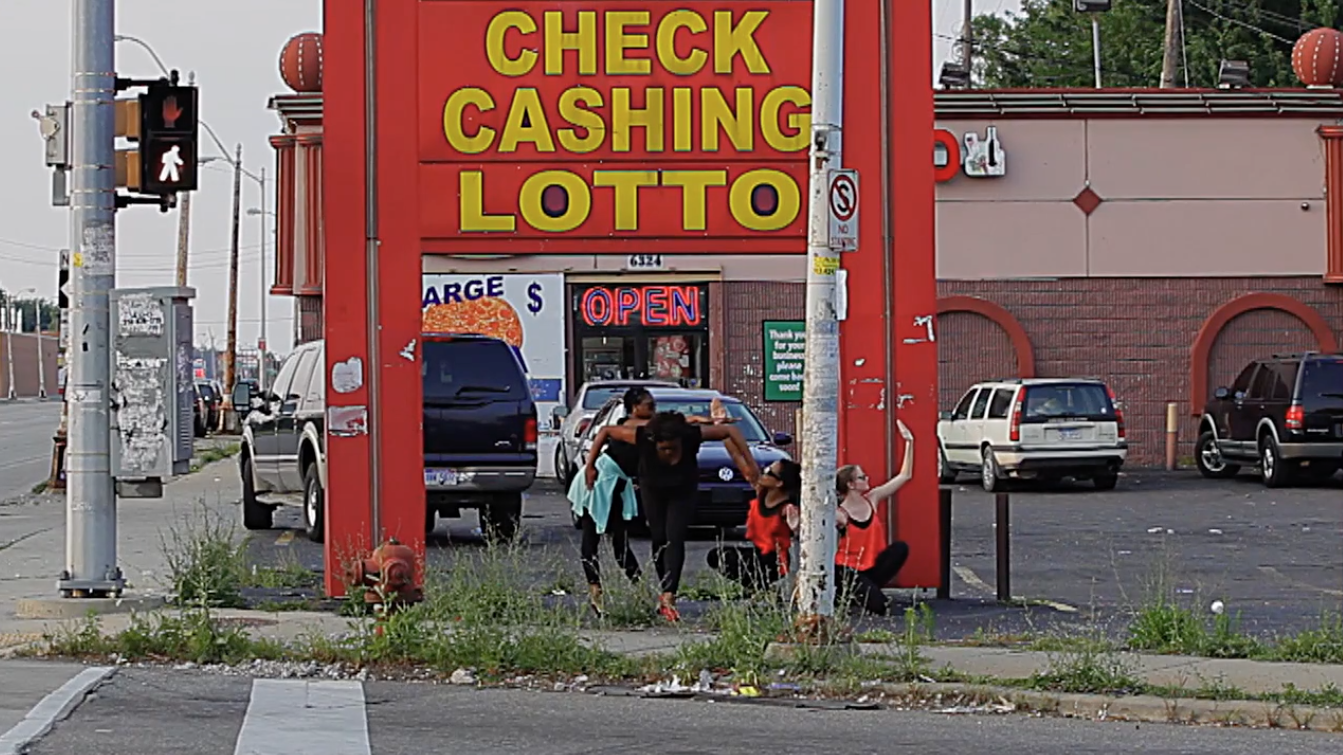
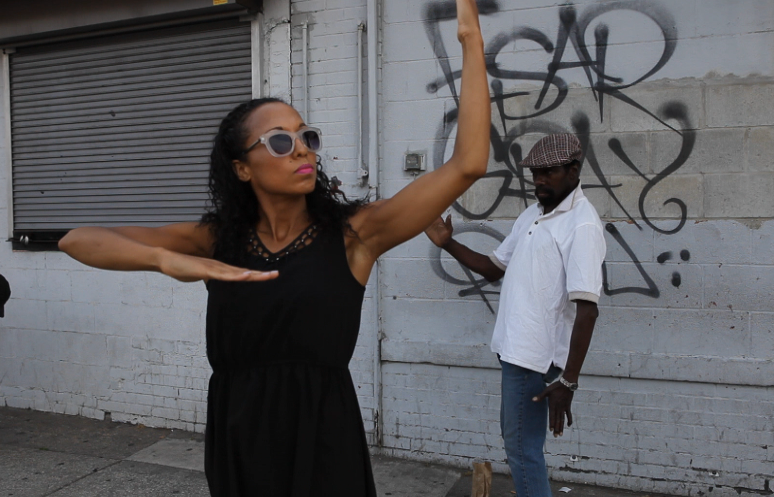
I begin each LST event with a staged dance performance, in which a series of choreographed pieces are presented while videographer Eric Johnston captures the footage and Martha Johnston captures stills. Conceptual artist Todd “Quaint” Stovall produces LST music, visual art elements, and also shoots. Quaint’s artistic presence and input are integral to LST. During this phase, many of those present on the sidewalks and streets around the store become interested and watch, while many others still, jaded by city life or otherwise preoccupied with their own doings, ignore us. LST, at times, feels like a celebration. The city as a party, after Lefebvre.2The right to the city is a theory of urban space asserted by French sociologist and philosopher Henri Lefebvre first in 1968. In Lefebvre’s text, … Indeed, we have started a party of some kind – or perhaps continued and provoked a party. I am blurring the lines between work and play, public and private, maybe life and death in a city. Those who do become interested in the staged performance are then invited to continue the dialogue which the dance started through an interview. After viewing a dance performance, people are more apt to dialogue. I ask questions about performance generally and in particular with respect to the participant’s life, using theatrical performance as a prompt and a point of vulnerability for a researcher who is typically in the dominant position. We discuss Detroit as a ballet, the neighborhood as a ballet, and the participant’s own view of the role of performance in everyday life. Both the disclosures of fact, and the actual performance and delivery of interview participants are important. The dialoguing between the dance as a cognitive prompt and the interview that follows are critical to the authenticity and integrity of the project. The durational framework of the project – coming and performing in the LST events over time in a neighborhood, as well as the vulnerable position of being under surveillance which the dancing allows me to assume, makes the project more dialogic. The pure presence which dancers bring represents an investment in time and space that is intended to mitigate the voyeurism that urban ethnography connotes. I am breathing in the elegantly furling second-hand smoke of those holding court at the liquor store as I dance with the residents of post-bankruptcy Detroit. Although the position of privilege conferred to an artist and researcher in an impoverished city cannot be un-inscribed, I also cannot be un-inscribed as female, of color, and daughter of this city. LST allows me to dance with this city in a way that builds on theory, challenges the global gaze cast upon "Detroit" and upon the "other," and investigates the rich scene of performance in urban spaces and places.
This summer, LST continued to explore in the neighborhood now known as Midtown. Many of the cluster of neighborhoods in the area known as Midtown are in the throws of the gentrification process – LST will investigate what this looks like in small urban spaces through the lens of dance and performance. A theatrical exchange between researcher and participant allows the story of a city to be told. I close my eyes, take a deep breath, and envision a Dali-esque surreal performance in front of the liquor store across the street from my studio apartment. I join the performance, entering slowly with a waltz step. LST provides a window through which to tell the story of a city in transition. The story is already there, the performances are happening now as I write these words. What I most want to be clear is that the city doesn’t need any of us – it needs only to dance.
References
